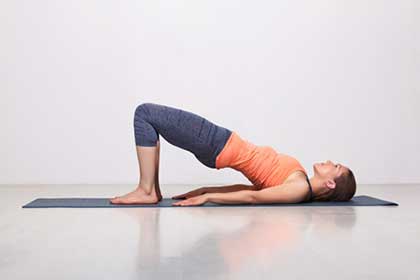Which muscles make up your core?
With the recent popularity of pilates, the phrase 'the core' has become widespread.
Core exercises should involve activation of the pelvic floor muscles and the deep abdominal muscles such as the transverse abdominus.
Your six pack muscle is not your core. Neither are the two layers of obliques underneath this. They are power muscles that help to move your trunk but they do not have a supportive function.
The core muscles have an upward, inward motion when contracting correctly and the six pack and oblique muscles create a downward and often outward force in the abdomen.
What do the core muscles do?
The upward and inward action of the core is very important in gynaecological and urological health.
This actions of the core muscles:
- prevent the pelvic organs from descending (pelvic organ prolapse)
- prevents our bladder and bowel from leaking (incontinence)
- helps to support the lower part of the spine and the pelvis.
Recent research has shown that it is possible to manage or even prevent incontinence and prolapse by exercising the core muscles regularly, if done under the guidance of a women’s health and continence physiotherapist.
How do you exercise your core?
The main way to exercise these muscles is to do regular pelvic floor exercises (or ‘Kegels’), which involves a squeeze and a lift around the back passage, front passage and the vagina.
This should not be visible from the outside, except for maybe a subtle indraw of the lower abdomen as the muscles come in.
Ideally, you should be doing a few sets of these a day, but there is no recipe.
A physiotherapist can give you an individualised program depending on what you can do after they check with an abdominal ultrasound, or in some cases a vaginal or rectal examination.
These exercises can be done in any position – standing, sitting, lying down – and the physiotherapist can show you how to incorporate this into your other workouts.
Pilates-type exercises can complement the basic pelvic floor exercises, and this is where core training comes into play.
What about gym-based exercises?
In reality, what is advertised as core training exercises in many gym programs are double straight leg raises and heavy medicine ball work that actually cause an over-recruitment of the superficial ‘power’ abdominal muscles and completely override the more subtle, deeper muscles.
The bearing down and bulging into the pelvic floor during these exercises is often evident.
Externally, this can also be obvious, with abdominal doming and breath-holding occurring.
Sit ups, double leg raises and planks may eventually have their place in a safe work out – but they are definitely not the starting point for core training.
What can go wrong if core training is done incorrectly?
People often only realise that these exercises have been inappropriate when something goes wrong.
This may be in the form of a musculoskeletal issue such as a lumbar disc injury, an abdominal issue such as an umbilical hernia, or a urological/gynaecological issue such as a vaginal prolapse or urinary incontinence.
All of these are essentially caused by the same issue – repetitive high intra-abdominal pressure that exceeds what can be matched by the deep supporting muscles such as the pelvic floor.
Therefore I recommend that you question what you are told in a gym class is a core exercise.
Is it really, or are you just recruiting your upper abdominal muscles and pushing everything outwards? Do you want abdominal muscles that draw inwards and are flat, or abdominal muscles that push outwards?
And most importantly, do you want your insides to be pushed downwards into your pelvic floor during a workout? Probably not.


